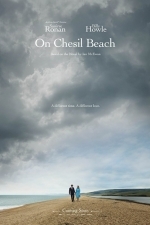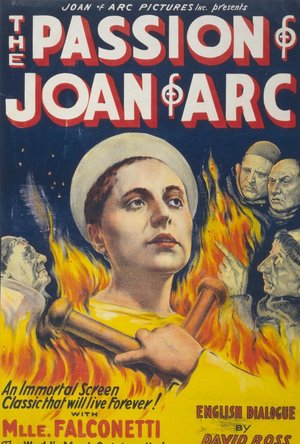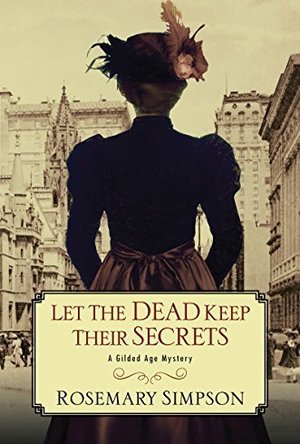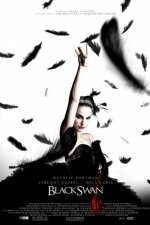Search
Search results

PhotoGrid - Pic & Video Editor
Photo & Video and Lifestyle
App
A must-have free photo editor app for photography fanatics and Instagram users! It's packed with...

Capture Pilot
Photo & Video
App
Capture Pilot is a professional photography app from Phase One that allows you to use your iOS...

Photogenic Studio Photo Editor
Photo & Video
App
"EVERYONE IS PHOTOGENICS" Are you searching the right photo editing app for your mobile...
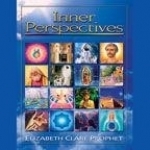
Inner Perspectives: Guideposts for the Spiritual Journey
Podcast
Elizabeth Clare Prophet, modern mystic and pioneer in New Age spirituality, answers more than 300...
Bob Mann (459 KP) rated On Chesil Beach (2018) in Movies
Sep 29, 2021
Flawed but moving tale of a bygone sexual era.
As you might notice from my lack of recent posts, the day job is getting in a way a bit at the moment. But one film I wanted to catch was this adaptation of Ian McEwan’s novel. What’s both an advantage and a disadvantage of catching a film late is that you can’t help avoid absorbing some of the reviews of others: Kevin Maher of the Times gave this a rather sniffy two stars; Amy from “Oh That Film Blog” was much more measured (an excellent review: man, that girl can write!). Last night, I actually ended up enjoying the film much more than I was expecting to.
Set against Dorset’s spectacular shingle bank of Chesil Beach (which is a bitch to walk along!) the story, set primarily in 1962, joins two newly-weds Florence (Saoirse Ronan, “Brooklyn“, “Lady Bird“) and Edward (Billy Howle, “Dunkirk“) about to embark on the sexual adventure of their consummation at a seaside hotel. The timing of the film is critical: 1962 really marked the watershed between the staid conservatism and goody-two-shoes-ness of the 50’s and the sexual liberation of the swinging sixties. Sex before marriage was frowned upon. The problem for Florence and Edward is that sex after marriage is looking pretty unlikely too! For the inexperienced couple have more hang-ups about sex than there are pebbles on the beach.
The lead-up to their union is squirm-inducing to watch: a silent silver-service meal in their room; incompetent fumbling with zippers; shoes that refuse to come off. To prolong the agony for the viewer, we work through flashbacks of their first meeting at Oxford University and their dysfunctional family lives: for Florence a bullying father and mother (Samuel West and Emily Watson) and for Edward a loving but stressed father (TV regular, Adrian Scarborough) due to a mentally impaired mother (Anne-Marie Duff, “Suffragette“, “Before I Go To Sleep“).
As Ian McEwan is known to do (as per the end of “Atonement” for example), there are a couple of clever “Oh My God” twists in the tale: one merely hinted at in flashback; another involving a record-buying child that is also unresolved but begs a massive question.
The first half of the film is undoubtedly better than the last: while the screenplay is going for the “if only” twist of films like “Sliding Doors” and “La La Land“, the film over-stretches with some dodgy make-up where alternative actors would have been a far better choice. The ending still had the power to move me though.
Saoirse Ronan is magnificent: I don’t think I’ve seen the young Irish-American in a film I didn’t enjoy. Here she is back with a McEwan adaptation again and bleeds discomfort with every line of her face. Her desperate longing to talk to someone – such as the kindly probing vicar – is constantly counteracted by her shame and embarassment. Howle also holds his own well (no pun intended) but when up against the acting tour de force of Ronan he is always going to appear in second place.
A brave performance comes from Anne-Marie Duff who shines as the mentally wayward mother. The flashback where we see how she came to be that way is wholly predicatable but still manages to shock. And Duff is part of a strong ensemble cast who all do their bit.
Another star of the show for me is the photography by Sean Bobbitt (“12 Years a Slave“) which portrays the windswept Dorset beach beautifully but manages to get the frame close and claustrophobic when it needs to be. Wide panoramas with characters barely on the left and right of the frame will play havoc with DVD ratios on TV, but work superbly on the big screen.
Directed by stage-director Dominic Cooke, in his movie-directing debut, this is a brave story to try to move from page to screen and while it is not without faults it is a ball-achingly sad tale that moved me. Recommended if you enjoyed the similarly sad tale of “Atonement”.
Set against Dorset’s spectacular shingle bank of Chesil Beach (which is a bitch to walk along!) the story, set primarily in 1962, joins two newly-weds Florence (Saoirse Ronan, “Brooklyn“, “Lady Bird“) and Edward (Billy Howle, “Dunkirk“) about to embark on the sexual adventure of their consummation at a seaside hotel. The timing of the film is critical: 1962 really marked the watershed between the staid conservatism and goody-two-shoes-ness of the 50’s and the sexual liberation of the swinging sixties. Sex before marriage was frowned upon. The problem for Florence and Edward is that sex after marriage is looking pretty unlikely too! For the inexperienced couple have more hang-ups about sex than there are pebbles on the beach.
The lead-up to their union is squirm-inducing to watch: a silent silver-service meal in their room; incompetent fumbling with zippers; shoes that refuse to come off. To prolong the agony for the viewer, we work through flashbacks of their first meeting at Oxford University and their dysfunctional family lives: for Florence a bullying father and mother (Samuel West and Emily Watson) and for Edward a loving but stressed father (TV regular, Adrian Scarborough) due to a mentally impaired mother (Anne-Marie Duff, “Suffragette“, “Before I Go To Sleep“).
As Ian McEwan is known to do (as per the end of “Atonement” for example), there are a couple of clever “Oh My God” twists in the tale: one merely hinted at in flashback; another involving a record-buying child that is also unresolved but begs a massive question.
The first half of the film is undoubtedly better than the last: while the screenplay is going for the “if only” twist of films like “Sliding Doors” and “La La Land“, the film over-stretches with some dodgy make-up where alternative actors would have been a far better choice. The ending still had the power to move me though.
Saoirse Ronan is magnificent: I don’t think I’ve seen the young Irish-American in a film I didn’t enjoy. Here she is back with a McEwan adaptation again and bleeds discomfort with every line of her face. Her desperate longing to talk to someone – such as the kindly probing vicar – is constantly counteracted by her shame and embarassment. Howle also holds his own well (no pun intended) but when up against the acting tour de force of Ronan he is always going to appear in second place.
A brave performance comes from Anne-Marie Duff who shines as the mentally wayward mother. The flashback where we see how she came to be that way is wholly predicatable but still manages to shock. And Duff is part of a strong ensemble cast who all do their bit.
Another star of the show for me is the photography by Sean Bobbitt (“12 Years a Slave“) which portrays the windswept Dorset beach beautifully but manages to get the frame close and claustrophobic when it needs to be. Wide panoramas with characters barely on the left and right of the frame will play havoc with DVD ratios on TV, but work superbly on the big screen.
Directed by stage-director Dominic Cooke, in his movie-directing debut, this is a brave story to try to move from page to screen and while it is not without faults it is a ball-achingly sad tale that moved me. Recommended if you enjoyed the similarly sad tale of “Atonement”.
RəX Regent (349 KP) rated The Passion of Joan of Arc (1928) in Movies
Feb 19, 2019
Silent cinema is not my strongest subject but one which I have been making a concerted effort to learn about over the past decade, but admittedly at a slow pace. The idea of sitting through a silent film can seem to be chore to a modern audience and to be honest, it can be inconceivable to the vast majority, but these attitudes only serve to deprive us of 30 years of cinema, both in primitive evolution and cinematic excellence.
The notion is that silent movies where almost amateurish is style, a three decade long film school to keep up occupied until the Talkies turned up and “film” as we know it, was born. This is wrong. Film is visual medium, Movies, moving pictures, all of which were accompanied by music by the way, so the term “silent” only really refers to the lack of synchronized sound and dialogue.
ydvjeYet, the core of film is visual. Modern cinema is a about perfecting the mesh of media forms, music, photography, narrative and sound. But without dialogue, silent movies had a challenge on their hands and one which The Passion Of Joan Of Arc, one of the last silent movies of the era, rose to perfectly.
Visually, this could have been made yesterday. A truly timeless blend of artistic and innovative cinematography, fast paced editing and outstanding performances. The Danish director, Carl Theodore Dreyer mastered the close up, naturalistic acting and manages to tell the procedural story of the trial of Joan Of Arc in such a gripping manner that you will forget that there is no spoken dialogue, yet you are literally putting the intertitles in to the mouths of the cast.
Not a single cast member is wasted, with every one pouring their hearts and souls in to the camera in such nuanced ways that it can be left to debate and interpretation as to exactly who is thinking or feeling what as Joan, Maria Falconetti in her third and final film role, steals the screen with her tortured soul and face shown almost entirely in close up.
the-passion-of-joan-of-arc-large-pictureOver acting has given way to strong acting, each shot designed to allow us access to her soul as she, in a plot not to dissimilar from the last hours of Jesus Christ, is torn between torture and certain death of abandoning her faith and spending the rest of her life imprisoned with only bread and water to look forward too.
The script is based on the actually accounts of the future saint’s trial in 1431 but the real events took place over 18 months whilst this either compresses this into one day or takes place on the last one, but the feeling is that this is the one and only trial of Joan so in that sense, theatrical licence has been taken but it hardly matters. The facts are present and the story is harrowing, made more so by an almost perfect production, led by a controversial, almost Kubrickian director, forcing his cast to suffer for their art, yet this version of events is also contested.
joan-of-arc-soundtrackFor everyone out there who believes that Silent movies are just cut to the chase comedies, or overly flamboyant and patronising filler until “real films” are made, this may just serve as wake up call, that films have evolved, but Sound would actually set the industry back in the 1930’s, as the new audio based art form evolved just as movies had up until this point., but Joan Of Arc should help all see that film has always been able to convey anything, from humour to horror; Real of make-believe.
Many believe that this movie is one of the best ever made and I do believe that to be true. An outstanding and forgotten film to all but critics and film buffs, one which everyone should see.
VERSION
The version which I watched was The Criterion Edition of the 1985 restoration of Dreyer’s “Lost” original cut. The music to this film was never deemed to be that important so there are several compositions which have been attached to the film over the years.
The “Lo Duca” cut, which was the a 61 minute version (1951) doing the rounds for years after the original cut was lost in a fire soon after the film’s release, was cut together by Joseph-Marie Lo Duca after discovering a negative in a vault. This version, as well as the “Director’s Cut” are both available on the Blu-ray, whilst it appeared that the 1985 restoration (Director’s Cut) is more widely available on DVD.
The notion is that silent movies where almost amateurish is style, a three decade long film school to keep up occupied until the Talkies turned up and “film” as we know it, was born. This is wrong. Film is visual medium, Movies, moving pictures, all of which were accompanied by music by the way, so the term “silent” only really refers to the lack of synchronized sound and dialogue.
ydvjeYet, the core of film is visual. Modern cinema is a about perfecting the mesh of media forms, music, photography, narrative and sound. But without dialogue, silent movies had a challenge on their hands and one which The Passion Of Joan Of Arc, one of the last silent movies of the era, rose to perfectly.
Visually, this could have been made yesterday. A truly timeless blend of artistic and innovative cinematography, fast paced editing and outstanding performances. The Danish director, Carl Theodore Dreyer mastered the close up, naturalistic acting and manages to tell the procedural story of the trial of Joan Of Arc in such a gripping manner that you will forget that there is no spoken dialogue, yet you are literally putting the intertitles in to the mouths of the cast.
Not a single cast member is wasted, with every one pouring their hearts and souls in to the camera in such nuanced ways that it can be left to debate and interpretation as to exactly who is thinking or feeling what as Joan, Maria Falconetti in her third and final film role, steals the screen with her tortured soul and face shown almost entirely in close up.
the-passion-of-joan-of-arc-large-pictureOver acting has given way to strong acting, each shot designed to allow us access to her soul as she, in a plot not to dissimilar from the last hours of Jesus Christ, is torn between torture and certain death of abandoning her faith and spending the rest of her life imprisoned with only bread and water to look forward too.
The script is based on the actually accounts of the future saint’s trial in 1431 but the real events took place over 18 months whilst this either compresses this into one day or takes place on the last one, but the feeling is that this is the one and only trial of Joan so in that sense, theatrical licence has been taken but it hardly matters. The facts are present and the story is harrowing, made more so by an almost perfect production, led by a controversial, almost Kubrickian director, forcing his cast to suffer for their art, yet this version of events is also contested.
joan-of-arc-soundtrackFor everyone out there who believes that Silent movies are just cut to the chase comedies, or overly flamboyant and patronising filler until “real films” are made, this may just serve as wake up call, that films have evolved, but Sound would actually set the industry back in the 1930’s, as the new audio based art form evolved just as movies had up until this point., but Joan Of Arc should help all see that film has always been able to convey anything, from humour to horror; Real of make-believe.
Many believe that this movie is one of the best ever made and I do believe that to be true. An outstanding and forgotten film to all but critics and film buffs, one which everyone should see.
VERSION
The version which I watched was The Criterion Edition of the 1985 restoration of Dreyer’s “Lost” original cut. The music to this film was never deemed to be that important so there are several compositions which have been attached to the film over the years.
The “Lo Duca” cut, which was the a 61 minute version (1951) doing the rounds for years after the original cut was lost in a fire soon after the film’s release, was cut together by Joseph-Marie Lo Duca after discovering a negative in a vault. This version, as well as the “Director’s Cut” are both available on the Blu-ray, whilst it appeared that the 1985 restoration (Director’s Cut) is more widely available on DVD.
Sassy Brit (97 KP) rated Let The Dead Keep Their Secrets in Books
Jun 5, 2019
Let The DEAD Keep Their Secrets by Rosemary Simpson brings to life New York City during the 1880s in a historical mystery. It is rich in the culture of the time with a riveting Colombo type crime. Readers know who has done it and seek clues with the characters to find the proof.
The plot opens with New York opera singer Claire Buchanan calling on the investigative services of Prudence MacKenzie and her partner, Geoffrey Hunter. Claire shows up at their door begging them to find out exactly how her twin sister, Catherine, and newborn daughter died, believing it was not from natural causes. Catherine’s husband, Aaron Sorenson, is a scoundrel and appears to be marrying women, getting them pregnant, and then having baby and mother die in childbirth. Prudence and Geoffrey find that childbirth can be dangerous to one’s health as they realize that Sorenson’s current wife may also be in danger. His motive, both the late wife and the current wife would inherit a substantial estate, which will go to him upon their death. Sorensen seems to always be in need of money to pay mounting gambling debts. As the tension mounts the investigative team is putting themselves at risk in attempting to expose the murder-for-inheritance scheme.
The author noted, “Catherine was emotionally abused. Women during that time period did not have much choice. In the Gilded Age in New York women were still property of their husbands. They were very limited to what their husbands wanted.”
One of the important clues is a photograph of the late mother and child. Simpson weaves into the story a Victorian Era custom, post-mortem photography. During these scenes readers learn of the spiritualists who believe “about the possibility of capturing an image of the soul leaving a body at the moment of death.” It was during this time that Claire senses something from her twin sister. The author commented, “During my research, I read how twins separated by birth and raised by different families still have the same likes and dislikes and can sense how each other feels.”
Through the characters people learn of the Gilded Age era, with a fascinating description of the homes, the period clothing, and the city of New York. Unlike many women of the time, Prudence is very unconventional, desiring to take the bar exam and become a litigator. For now, she is content to be an amateur sleuth to her partner, ex-Pinkerton agent Geoffrey Hunter, as she learns on the job. “I wrote Prudence being raised by a widowed father who looked at her as a replacement for a son. He did not make an exception for her being a girl and made sure she had a very well developed sharp legal mind. She is determined to make her own way even though she inherited wealth. I read that the Pinkerton Agency hired a lady detective during the Civil War and knew I wanted to make my heroine an investigator who is constantly challenged by Geoffrey.”
The hero and heroine also have flaws. The author uses events that happened during the Gilded Age paralleling them with what is happening today. Simpson explained, “Geoffrey has left his southern roots, abandoning his culture and family. He has a lot of contradictions. Prudence must struggle with her addiction to the drug laudanum. She was given it by her family doctor to help her cope with her father’s passing and then her fiancé’s death. She overcame the reliance on laudanum but not without a terrible struggle and the knowledge that she would never be entirely free of it. I parallel it with the opioid epidemic today. People became accidental addicts because they were given the drugs legally to cope with physical and emotional pain.”
The antagonist, Simpson has no redeeming qualities. He is a cold and calculating thief, a swindler, and bigamist who victimizes rich women. “I wanted to write an absolute villain. He is unscrupulous, uncaring with no conscience. He had every vile habit known. I do not write cozy mysteries, but historical noirs. My bad guys are really, really bad who cause awful things to happen.”
The author definitely had done her homework. “I want to feel I live in this world for awhile and to get the reader to feel that also. I read the New York Times Archives and fall into the rhythm of the language used, how they spoke, wrote and thought. It puts me in the mindset of the character I am writing about.” With her detailed descriptions and gripping story Simpson has also drawn the reader into the time period through an exciting and action-packed mystery.
The plot opens with New York opera singer Claire Buchanan calling on the investigative services of Prudence MacKenzie and her partner, Geoffrey Hunter. Claire shows up at their door begging them to find out exactly how her twin sister, Catherine, and newborn daughter died, believing it was not from natural causes. Catherine’s husband, Aaron Sorenson, is a scoundrel and appears to be marrying women, getting them pregnant, and then having baby and mother die in childbirth. Prudence and Geoffrey find that childbirth can be dangerous to one’s health as they realize that Sorenson’s current wife may also be in danger. His motive, both the late wife and the current wife would inherit a substantial estate, which will go to him upon their death. Sorensen seems to always be in need of money to pay mounting gambling debts. As the tension mounts the investigative team is putting themselves at risk in attempting to expose the murder-for-inheritance scheme.
The author noted, “Catherine was emotionally abused. Women during that time period did not have much choice. In the Gilded Age in New York women were still property of their husbands. They were very limited to what their husbands wanted.”
One of the important clues is a photograph of the late mother and child. Simpson weaves into the story a Victorian Era custom, post-mortem photography. During these scenes readers learn of the spiritualists who believe “about the possibility of capturing an image of the soul leaving a body at the moment of death.” It was during this time that Claire senses something from her twin sister. The author commented, “During my research, I read how twins separated by birth and raised by different families still have the same likes and dislikes and can sense how each other feels.”
Through the characters people learn of the Gilded Age era, with a fascinating description of the homes, the period clothing, and the city of New York. Unlike many women of the time, Prudence is very unconventional, desiring to take the bar exam and become a litigator. For now, she is content to be an amateur sleuth to her partner, ex-Pinkerton agent Geoffrey Hunter, as she learns on the job. “I wrote Prudence being raised by a widowed father who looked at her as a replacement for a son. He did not make an exception for her being a girl and made sure she had a very well developed sharp legal mind. She is determined to make her own way even though she inherited wealth. I read that the Pinkerton Agency hired a lady detective during the Civil War and knew I wanted to make my heroine an investigator who is constantly challenged by Geoffrey.”
The hero and heroine also have flaws. The author uses events that happened during the Gilded Age paralleling them with what is happening today. Simpson explained, “Geoffrey has left his southern roots, abandoning his culture and family. He has a lot of contradictions. Prudence must struggle with her addiction to the drug laudanum. She was given it by her family doctor to help her cope with her father’s passing and then her fiancé’s death. She overcame the reliance on laudanum but not without a terrible struggle and the knowledge that she would never be entirely free of it. I parallel it with the opioid epidemic today. People became accidental addicts because they were given the drugs legally to cope with physical and emotional pain.”
The antagonist, Simpson has no redeeming qualities. He is a cold and calculating thief, a swindler, and bigamist who victimizes rich women. “I wanted to write an absolute villain. He is unscrupulous, uncaring with no conscience. He had every vile habit known. I do not write cozy mysteries, but historical noirs. My bad guys are really, really bad who cause awful things to happen.”
The author definitely had done her homework. “I want to feel I live in this world for awhile and to get the reader to feel that also. I read the New York Times Archives and fall into the rhythm of the language used, how they spoke, wrote and thought. It puts me in the mindset of the character I am writing about.” With her detailed descriptions and gripping story Simpson has also drawn the reader into the time period through an exciting and action-packed mystery.
Louise (64 KP) rated I'll Give You the Sun in Books
Jul 2, 2018
I'll give you the sun follows twins Noah and Jude that are aspiring artists. They are both working on their portfolios to get into a prestigious art school in the local area when a tragedy pulls them apart and they start to live two separate lives.
I loved this book the writing was so poetic and beautiful. The story is written from two perspectives and at different times. Noah's perspective is written when he is 13. 5 years old and before 'said' tragedy struck and Jude's when she is 16 - two years later. At 13 years old the pair were close with sibling rivalries, respecting each others art and dividing the world up.
“I gave up practically the whole world for you,” I tell him, walking through the front door of my own love story. “The sun, stars, ocean, trees, everything, I gave it all up for you.”
At 16 the pair couldn't be further apart, they constantly avoid each other and barely talk. When lies start to unravel and they discover the truth, can they become two once more.
Noah is a painter, he's such a cute young boy, with his confusion of being gay and what it means to come out is so cleverly portrayed through this character. The frustration and tension is palpable between him and Brian. The want of your heart desires and the reality of doing and facing the backlash from the people around you is what stops him. Noah has never been perceived as 'normal' to his class mates and being bullied is a daily problem until he meets the new kid Brian who is a baseball player for his local school, with Brian by his side he becomes socially accepted, even though he knows that Brian is a bit of geek like himself with his meteorite collections.
Jude an ambitious sculptor is a young impressionable girl at the age of 14, however as she is telling her POV at the age of 16 she has had a lot of time to develop but also grieve at the same time. Jude is struggling at school, she hasn't made any good artwork for the past 2 years and believes there is someone out to destroy her pieces. She has one last chance to make it right and is sent to work with a local but famous sculptor. The sculptor has problems of his own and between the both of them they start to overcome their grief through the process of sculpting.
Oscar is not the typical cool guy, who has everything going for him with his distinguishable features, his past and present he is also on the road to self discovery. When we first meet Oscar in Noah's perspective he is a drunk, with ambitions to be a model. 2 years later in Jude's perspective he is a recovering alcoholic/drug user, going to college for photography and has a cocky side to him which covers up the true Oscar.
“It occurs to me that Jude does this too, changes who she is depending on who she’s with. They’re like toads changing their skin color. How come I’m always just me?”
There were only two things that stopped me from giving this book 5 stars and it's not much but I had to factor them in. I found the book a bit predictable in some parts. You could tell how it was going to pan out. Also the ending felt a bit rushed for me towards the end, I think it could have been a bit longer to make the ending a bit more bulkier. The thing I liked with Nelson's writing is your reading away and then BAM! She just lets you have this incredible fact like it's nothing major and I had to reread to make sure I hadn't read it wrong. The grandma's bible that Jude follows got a bit tiresome in the end.
I went in to this book blind, not knowing too much about the premise and I recommend it, I like going in to books not knowing much it is more surprising and enjoyable to read. There are references in the book to famous people and quotes such as Winston Churchill and E.E Cummings. This book deals with love, bullying, grief, growing up, self discovery and all the challenges of being a teenager.
I recommend this book to anyone that likes to read Young Adult and Contemporary novels.
Overall I rated this book 4.5 stars out of 5.
I loved this book the writing was so poetic and beautiful. The story is written from two perspectives and at different times. Noah's perspective is written when he is 13. 5 years old and before 'said' tragedy struck and Jude's when she is 16 - two years later. At 13 years old the pair were close with sibling rivalries, respecting each others art and dividing the world up.
“I gave up practically the whole world for you,” I tell him, walking through the front door of my own love story. “The sun, stars, ocean, trees, everything, I gave it all up for you.”
At 16 the pair couldn't be further apart, they constantly avoid each other and barely talk. When lies start to unravel and they discover the truth, can they become two once more.
Noah is a painter, he's such a cute young boy, with his confusion of being gay and what it means to come out is so cleverly portrayed through this character. The frustration and tension is palpable between him and Brian. The want of your heart desires and the reality of doing and facing the backlash from the people around you is what stops him. Noah has never been perceived as 'normal' to his class mates and being bullied is a daily problem until he meets the new kid Brian who is a baseball player for his local school, with Brian by his side he becomes socially accepted, even though he knows that Brian is a bit of geek like himself with his meteorite collections.
Jude an ambitious sculptor is a young impressionable girl at the age of 14, however as she is telling her POV at the age of 16 she has had a lot of time to develop but also grieve at the same time. Jude is struggling at school, she hasn't made any good artwork for the past 2 years and believes there is someone out to destroy her pieces. She has one last chance to make it right and is sent to work with a local but famous sculptor. The sculptor has problems of his own and between the both of them they start to overcome their grief through the process of sculpting.
Oscar is not the typical cool guy, who has everything going for him with his distinguishable features, his past and present he is also on the road to self discovery. When we first meet Oscar in Noah's perspective he is a drunk, with ambitions to be a model. 2 years later in Jude's perspective he is a recovering alcoholic/drug user, going to college for photography and has a cocky side to him which covers up the true Oscar.
“It occurs to me that Jude does this too, changes who she is depending on who she’s with. They’re like toads changing their skin color. How come I’m always just me?”
There were only two things that stopped me from giving this book 5 stars and it's not much but I had to factor them in. I found the book a bit predictable in some parts. You could tell how it was going to pan out. Also the ending felt a bit rushed for me towards the end, I think it could have been a bit longer to make the ending a bit more bulkier. The thing I liked with Nelson's writing is your reading away and then BAM! She just lets you have this incredible fact like it's nothing major and I had to reread to make sure I hadn't read it wrong. The grandma's bible that Jude follows got a bit tiresome in the end.
I went in to this book blind, not knowing too much about the premise and I recommend it, I like going in to books not knowing much it is more surprising and enjoyable to read. There are references in the book to famous people and quotes such as Winston Churchill and E.E Cummings. This book deals with love, bullying, grief, growing up, self discovery and all the challenges of being a teenager.
I recommend this book to anyone that likes to read Young Adult and Contemporary novels.
Overall I rated this book 4.5 stars out of 5.
Chris Sawin (602 KP) rated Black Swan (2010) in Movies
Jun 21, 2019 (Updated Jun 23, 2019)
Darren Aronofsky has been circling movie news sites pretty frequently as of late. He recently signed on to direct the stand-alone sequel to Wolverine (appropriately titled The Wolverine). He also developed a rather large and devoted fanbase over the course of directing fantastically surreal films such as Pi, Requiem for a Dream, and The Wrestler, but his psychological thriller Black Swan has also been gaining quite a bit of steam leading up to its December 3rd release. Despite Aronofsky's already well-established reputation and the rather high anticipation for the film, Black Swan still delivers a product that is even better than expected.
Like most ballerinas, Nina (Portman) lives, breathes, and is completely devoted to dance. Artistic director Thomas Leroy (Cassel) is preparing a new spring production of his interpretation of Swan Lake. Nina is next in line to become prima ballerina after the former dancer to hold that spot, Beth Macintyre (Ryder), reluctantly retires. Everything seems to be shifting in that direction until a rather unorthodox, provocative, and unstable (in a dangerous kind of way) dancer named Lily (Kunis) arrives. Lily seems to have an eye for Nina's spot as soon as she walks through the door. Thomas begins to see Nina as the White Swan, which signifies innocence and perfection and Lily as the Black Swan, which is more sensual and deceptive. The problem is that one dancer is required to play both parts. Other than the stiff competition she has to deal with, The Swan Queen role begins to take its toll on Nina who begins to think Lily wants even more than her spot in the production. Nina's obsessive behavior leads to her releasing her dark side that she must now struggle to control.
Aronofsky has always had an exceptional eye for cinematography in his films. His use of micro-photography in The Fountain made the entire film a visually stunning spectacle that will stand the test of time while something like a someone's pupil dilating or a drug deal gone bad in Requiem for a Dream is memorable because of the way and angle Aronofsky shot it rather than relying on its disturbing content to make the scene a classic. Black Swan is no different. Being placed behind Nina whenever she heads to the dance venue gives the viewer a rather unique third person perspective that also gives the impression that you're walking right behind the main character of the film. The intense dream sequences are also shot in a way that flawlessly blur the line between reality and hallucination. Is this really happening or is it all a figment of Nina's deteriorating imagination? Figuring that out is half the film's charm.
The extraordinary main cast is the main ingredient to the film being as great as it is though. The key players all seem to have this twisted side to them that is nearly the exact opposite of the way they first appear to be, which coincides with the Swan Lake theme. Winona Ryder steals most of the screen time she's given whether she's trashing her dressing room, yelling obscenities in Portman's face, or sitting in a hospital room. Even though Mila Kunis seems to play nothing more than her role in Forgetting Sarah Marshall to the most extreme degree on the surface, it's the edge she's given that results in unpredictablity for her character. While Vincent Cassel's performance is strong thanks to his sensual reputation with his dancers and Barbara Hersey is both charming and disturbing as Nina's mother who seems to secretly be trying to live in her daughter's dance shoes after a missed opportunity in her past, it's no surprise to hear that Natalie Portman is the heart of the film. Nina is so consumed with dance that she keeps pushing herself even when her mind and body begin to show her that she's had enough. Her breakdowns are heartbreaking and engaging to watch while her transformation by the end of the film can best be described as a monstrous beauty. It's all thanks to Portman's powerful, phenomenal, tour de force performance.
While some might not be surprised that Aronofsky has created another masterpiece, this may be his most solid and well-rounded film to date. Black Swan is a beautiful, disturbing, and captivating work of art that features gorgeous camera work, an excellent and mindbending story, and one of Natalie Portman's best performances.
Like most ballerinas, Nina (Portman) lives, breathes, and is completely devoted to dance. Artistic director Thomas Leroy (Cassel) is preparing a new spring production of his interpretation of Swan Lake. Nina is next in line to become prima ballerina after the former dancer to hold that spot, Beth Macintyre (Ryder), reluctantly retires. Everything seems to be shifting in that direction until a rather unorthodox, provocative, and unstable (in a dangerous kind of way) dancer named Lily (Kunis) arrives. Lily seems to have an eye for Nina's spot as soon as she walks through the door. Thomas begins to see Nina as the White Swan, which signifies innocence and perfection and Lily as the Black Swan, which is more sensual and deceptive. The problem is that one dancer is required to play both parts. Other than the stiff competition she has to deal with, The Swan Queen role begins to take its toll on Nina who begins to think Lily wants even more than her spot in the production. Nina's obsessive behavior leads to her releasing her dark side that she must now struggle to control.
Aronofsky has always had an exceptional eye for cinematography in his films. His use of micro-photography in The Fountain made the entire film a visually stunning spectacle that will stand the test of time while something like a someone's pupil dilating or a drug deal gone bad in Requiem for a Dream is memorable because of the way and angle Aronofsky shot it rather than relying on its disturbing content to make the scene a classic. Black Swan is no different. Being placed behind Nina whenever she heads to the dance venue gives the viewer a rather unique third person perspective that also gives the impression that you're walking right behind the main character of the film. The intense dream sequences are also shot in a way that flawlessly blur the line between reality and hallucination. Is this really happening or is it all a figment of Nina's deteriorating imagination? Figuring that out is half the film's charm.
The extraordinary main cast is the main ingredient to the film being as great as it is though. The key players all seem to have this twisted side to them that is nearly the exact opposite of the way they first appear to be, which coincides with the Swan Lake theme. Winona Ryder steals most of the screen time she's given whether she's trashing her dressing room, yelling obscenities in Portman's face, or sitting in a hospital room. Even though Mila Kunis seems to play nothing more than her role in Forgetting Sarah Marshall to the most extreme degree on the surface, it's the edge she's given that results in unpredictablity for her character. While Vincent Cassel's performance is strong thanks to his sensual reputation with his dancers and Barbara Hersey is both charming and disturbing as Nina's mother who seems to secretly be trying to live in her daughter's dance shoes after a missed opportunity in her past, it's no surprise to hear that Natalie Portman is the heart of the film. Nina is so consumed with dance that she keeps pushing herself even when her mind and body begin to show her that she's had enough. Her breakdowns are heartbreaking and engaging to watch while her transformation by the end of the film can best be described as a monstrous beauty. It's all thanks to Portman's powerful, phenomenal, tour de force performance.
While some might not be surprised that Aronofsky has created another masterpiece, this may be his most solid and well-rounded film to date. Black Swan is a beautiful, disturbing, and captivating work of art that features gorgeous camera work, an excellent and mindbending story, and one of Natalie Portman's best performances.

